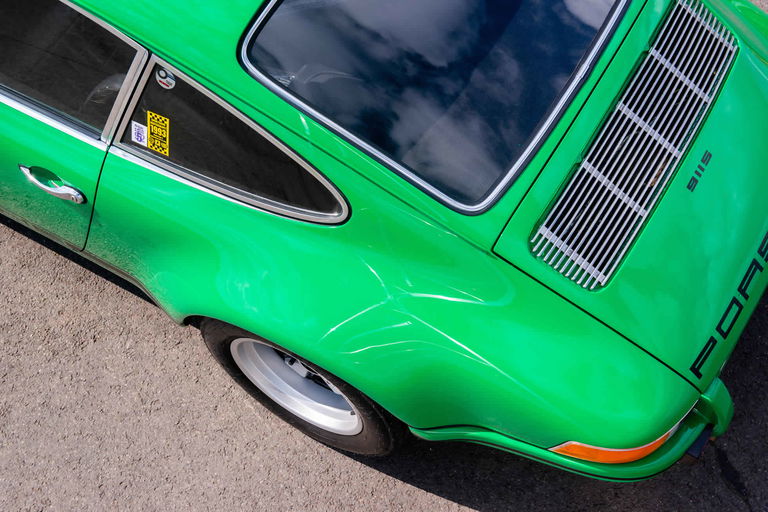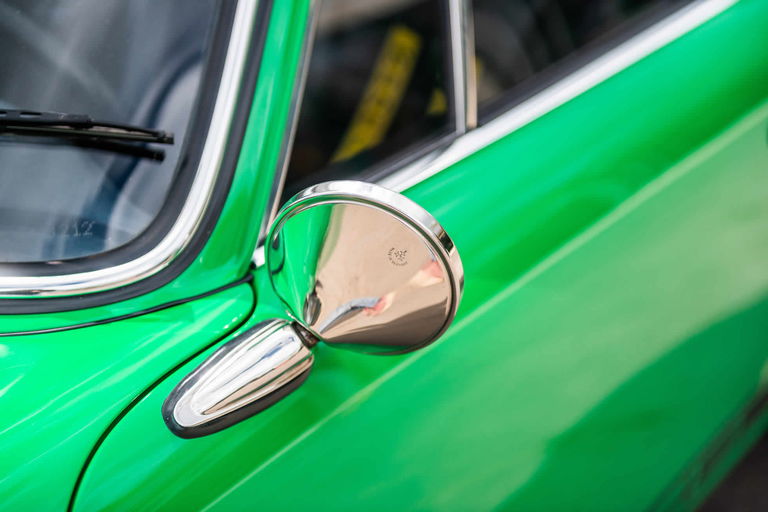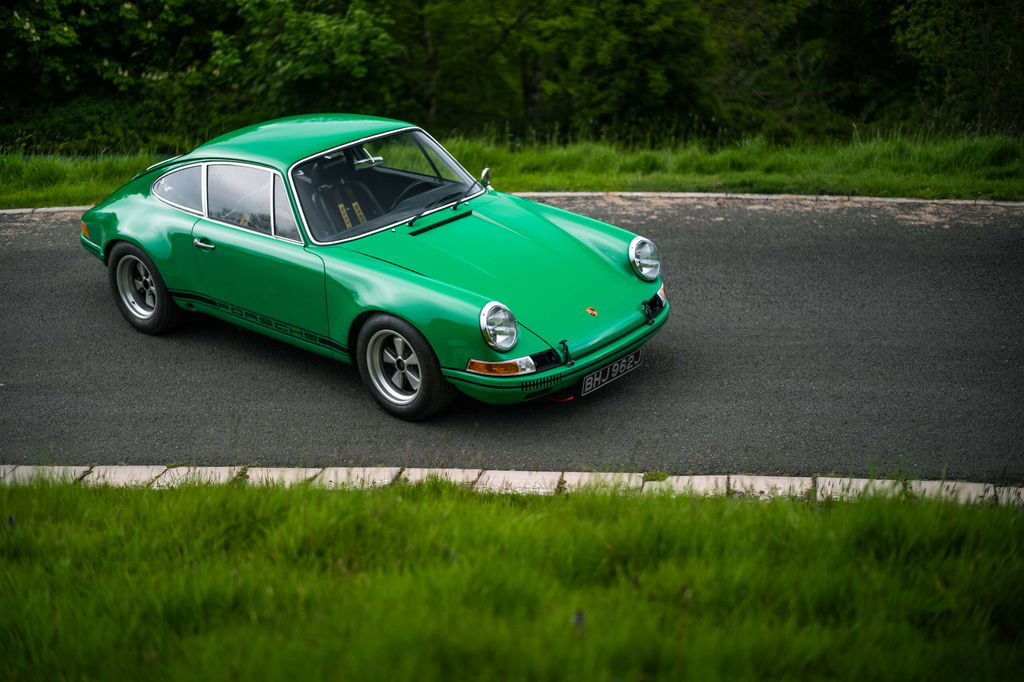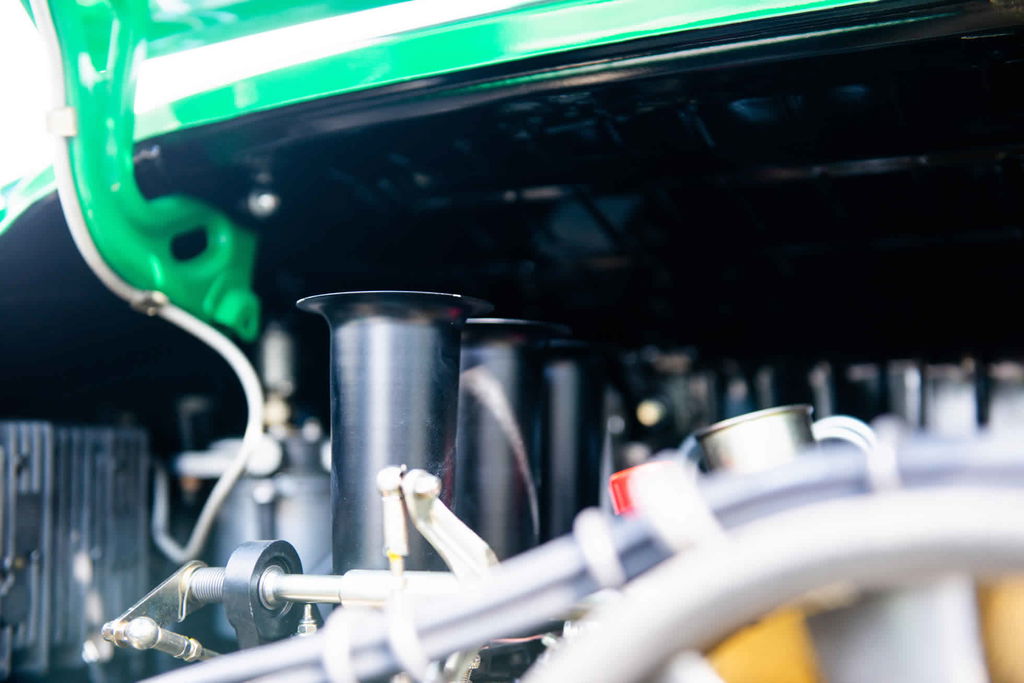The official build specification of this car indicates that it left the factory with an M471 lightweight body, a simplified interior, no underseal and thinner than standard glass. It was fitted with an “S” spec 2.2 L engine and short ratio “Airfield” competition gearbox. The list of additional racing options is extensive and it seems clear the car was intended for short circuit or hillclimb competition.
A full restoration of the car which took over three years was completed in 2019. The engine and gearbox were rebuilt by Manfred Rugen, the former to full race specification with 2,340cc capacity, twin plug ignition, race fuel injection pump and high butterfly induction. Further detail work was completed by Sportwagen under the guidance of Sports Purpose. The car has done less than 2,000 miles since.
In terms of authenticity, so important on these early competition 911s, the car has all of its identification markings intact: the VIN stamping in the luggage compartment, the original VIN tag, the production number stamping under the dashboard, the original production number wax marking on the dash cowl and the original engine number. The car has a Certificate of Authenticity from Porsche which confirms its identity as an S -T. It is also included in the list of factory S – T chassis compiled by Porsche historian Hugh Hodges and recently published in 000 Magazine.
Overall the car presents as an authentic period race car and retains a character that is all too often lost in the modern restoration process.
The car retains the leather Recaro Sport seats which have been in the car for many years and which Rolf Nilsson inherited when he bought it in 1989. However it is currently fitted with a pair of original Recaro lightweight bucket seats which are available by separate negotiation.
The 1971 911 S-T has always been a very desirable car and is regarded by many as the most beautiful of all the 911 iterations. The wheel arches were widened by just enough to give the car a purposeful appearance while the lack of aggressive aerodynamic features found on later cars means it retains the purity of the original 911 shape. It’s no coincidence that the Singer cars and the latest 992 design bear more than a passing resemblance.
The key attraction of this particular car is its status as an intact original lightweight S-T with strong proof of identity. Many of these cars were either raced to the point of destruction or extensively modified such that little of the original car remains. It is extremely rare to find an S-T in such a complete condition and with so many identifying features still present.
As well as being beautiful and rare, a properly prepared 1971 S-T such as this is also a hugely eligible event car. Its size, power to weight ratio and durability make it perfect for top tier road rally events.
Lastly, and probably most importantly, these cars are a dream to drive. They are a perfect mixture of power, weight and grip that is accessible to mere mortals and that does not require a modern F1 circuit to be enjoyed.
Weiterlesen
















































